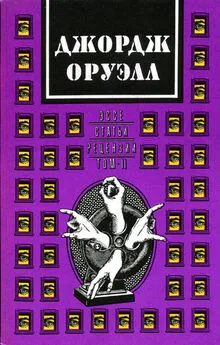Джордж Ритцер - Макдональдизация общества 5
- Название:Макдональдизация общества 5
- Автор:
- Жанр:
- Издательство:неизвестно
- Год:2011
- Город:Москва
- ISBN:978-5-901574-86-7
- Рейтинг:
- Избранное:Добавить в избранное
-
Отзывы:
-
Ваша оценка:
Джордж Ритцер - Макдональдизация общества 5 краткое содержание
Макдональдизация общества 5 - читать онлайн бесплатно полную версию (весь текст целиком)
Интервал:
Закладка:
138
Alan Riding. «Only the French Elite Scorn Mickey’s Debut». New York Times, April 13, 1992, p. A13.
139
George Stauth, Bryan S. Turner. «Nostalgia, Postmodernism and the Critique of Mass Culture». Theory, Culture and Society 5 (1988): 509–526; Bryan S. Turner. «A Note on Nostalgia». Theory, Culture and Society 4 (1987): 147–156.
140
Lee Hockstader. «No Service, No Smile, Little Sauce». Washington Post, August 5, 1991, p. A12.
141
Douglas Farah. «Cuban Fast Food Joints Are Quick Way for Government to Rally Economy». Washington Post, January 24, 1995, p. A14.
142
В этом смысле, здесь есть сходство с критикой Марксом капитализма. Маркса не вдохновляла романтизация докапиталистического общества, а, скорее, желание создать истинно человеческое (коммунистическое) общество на основе, которую обеспечил капитализм. Несмотря на такую близость к марксистской теории, эта книга, как вы увидите, гораздо сильнее опирается на теории Макса Вебера.
143
Эти концепции ассоциируются с работой социолога Энтони Гидденса. См., например: Anthony Giddens. The Constitution of Society. Berkeley: University of California Press, 1984.
144
Jon Ortiz. «Customers Drawn to Ikea Experience». Sacramento Bee, February 26, 2006, p. D1ff.
145
Stephanie Irwin. «It’s a Destination… It’s a Lifestyle… It’s a Furniture Store». Dayton Daily News, August 2, 2006, p. D8.
146
Ibid.
147
Jon Ortiz. «Customers Drawn to Ikea Experience». Sacramento Bee, February 26, 2006, p. D1ff.
148
Ibid.
149
Stephanie Irwin. «It’s a Destination… It’s a Lifestyle… It’s a Furniture Store». Dayton Daily News, August 2, 2006, p. D8.
150
Robert J. Samuelson. «In Praise of McDonald’s». Washington Post, November 1, 1989, p. A25.
151
Edwin M. Reingold. «America’s Hamburger Helper». Time, June 29, 1992, pp. 66–67.
152
Я благодарю своего коллегу, Стэна Прессера, за совет перечислить на этих страницах все виды преимуществ.
153
George Ritzer, Seth Ovadia. «The Process of McDonaldization Is Not Uniform, nor Are Its Setting, Consumers, or the Consumption of Its Goods and Services»//Mark Gottdiener (ed.). New Forms of Consumption: Consumers, Cultures and Commodification. Lanham, MD: Rowman and Littlefield, 2000, pp. 33–49.
154
Хотя предтечи «Макдональдса», представленные в этой главе, не исчерпывают собой всех рационализированных институций, которые существовали до «Макдональдса», они наиболее важны для понимания «Макдональдса» и макдональдизации.
155
Изложение идей Вебера по книге: Мах Weber. Economy and Society. Totowa, NJ: Bedminster, 1921/1968.
156
Рестораны фаст-фуда можно рассматривать как часть бюрократической системы; на самом деле, сейчас гигантские конгломераты (например, «Yum! Brands, Inc.») владеют сетями фаст-фуда.
157
Вебер называл это содержательной рациональностью, чтобы отличать от формальной рациональности.
158
Ronald Takaki. Iron Cages: Races and Culture in 19th-Century America. New York: Oxford University Press, 1990, p. IX.
159
Harvey Greisman, «Disenchantment of the World.» British Journal of Sociology 27 (1976): 497–506.
160
По поводу круизных лайнеров как «соборов потребления» см.: George Ritzer. Enchanting a Disenchanted World: Revolutionizing the Means of Consumption, 2nd ed. Thousand Oaks, CA: Pine Forge Press, 2005.
161
Zygmunt Bauman. Modernity and the Holocaust. Ithaca, NY: Cornell University Press, 1989, p.149.
162
Ibid., p.8.
163
Однако в современной Руанде за 100 дней войны между племенами хуту и тутси было убито 800 000 человек (эта скорость превышала в 3 раза скорость убийства евреев во время Холокоста). Использованные методы — в основном, мачете — явно не были рационализированными. См.: Philip Gourevich. We Wish to Inform You That Tomorrow We Will Be Killed With Our Families: Stories From Rwanda. New York: Farrar, Straus and Giroux, 1998.
164
Как будет показано в Главе 3, рестораны фаст-фуда повышают свою эффективность за счет того, что заставляют клиентов выполнять (безо всякой оплаты) самую разную работу.
165
Zygmunt Bauman. Modernity and the Holocaust. Ithaca, NY: Cornell University Press, 1989, p. 103.
166
Ibid., p. 89.
167
Ibid., p. 8.
168
Ibid., p. 102.
169
Feingold, процитированный в: Zygmunt Bauman. Modernity and the Holocaust. Ithaca, NY: Cornell University Press, 1989, p. 136.
170
Frederick W. Taylor. The Principles of Scientific Management. New York: Harper&Row, 1947; Robert Kanigel. One Best Way: Frederick Winslow Taylor and the Enigme of Efficiency. New York: Viking, 1997.
171
Frederick W. Taylor. The Principles of Scientific Management. New York: Harper&Row, 1947, pp. 6–7.
172
Ibid., p. 11.
173
George Ritzer, Terri LeMoyne. «Hyperrationality: An Extension of Weberian and NeoWeberian Theory»//George Ritzer (ed.), Metatheorizing in Sociology. Lexington, MA: Lexington Books, 1991, pp. 93-115.
174
Ester Reiter. Making Fast Food. Montreal and Kingston: McGill-Queen’s University Press, 1991, pp. 112–114.
175
Henry Ford. My Life and Work. Garden City, NY: Doubleday, 1922; James T. Flink. The Automobile Age. Cambridge: MIT Press, 1988.
176
Henry Ford. My Life and Work. Garden City, NY: Doubleday, 1922, p. 80.
177
Jerry Newman. My Secret Life on the McJob. New York: McGraw-Hill, 2007, pp. 168–169.
178
Bruce A. Lohof. «Hamburger Stand Industrialisation and the Fast-Food Phenomena»//Marshall Fishwick (ed.). Ronald Revisited: The World of Ronald McDonald. Bowling Green, OH: Bowling Green University Press, 1983, pp. 30. См. также: Ester Reiter. Making Fast Food. Montreal and Kingston: McGill-Queen’s University Press, 1991, p. 75.
179
Marshall Fishwick. «Cloning Clowns: Some Final Thoughts»//Marshall Fishwick (ed.). Ronald Revisited: The World of Ronald McDonald. Bowling Green, OH: Bowling Green University Press, 1983, pp. 148–151.
180
«Дженерал моторз», и особенно Альфред Слоан, еще больше рационализировали бюрократическую структуру автомобильной промышленности. Слоан прославился введением многофилиальной системы в «Дженерал моторз», в которой головной офис принимал долгосрочные решения, а филиалы — повседневные решения. Это нововведение оказалось настолько успешным, что другие автомобильные компании, равно как фирмы в других отраслях ее позаимствовали. См.: James T. Flink. T. Flink. The Automobile Age. Cambridge: MIT Press, 1988; Alfred P. Sloan, Jr. My Years at General Motors. Garden City, NY: Doubleday, 1964.
181
«Levitt’s Progress». Fortune, October 1952, pp. 155ff.
182
Richard Perez-Pena. «William Levitt, 86, Suburb Maker, Dies». New York Times , January 29, 1994, p. 26.
183
«The Most House for the Money». Fortune, October 1952, p. 152.
184
Ibid., p. 153.
185
Herbert Gans. The Levittowners: Ways of Life and Politics in a New Suburban Community. New York: Pantheon, 1967, p. 13.
186
Patricia Dane Rogers. «Building…» Washington Post/Home, February 2, 1995, pp. 12, 15; Rebecca Lowell. «Modular Homes Move Up». Wall Street Journal, October 23, 1998, p. W10.
187
Richard Gordon, Katherine K. Gordon, Max Gunther. The Split Level Trap. New York: Gilbert Geis Associates, 1960.
188
Georgia Dullea. «The Tract House as Landmark». New York Times, October 17, 1991, pp. C1, C8.
189
Herbert Gans. The Levittowners: Ways of Life and Politics in a New Suburban Community. New York: Pantheon, 1967, p. 432.
190
William Severini Kowinski. The Mailing of America: An Iside Look at the Great Consumer Paradise. New York: Willian Morrow, 1985.
191
http://www.mallofamerica.com/.
192
«First Foreign-Funded Department Store Closes in China’s Wuhan». Asia Pulse, November 7, 2001, Northern Territory Regional Section.
193
Janice L. Kaplan. «The Mall Outlet for Cabin Fever». Washington Post/Weekend, February 10, 1995, p. 53.
194
William Severini Kowinski. The Mailing of America: An Iside Look at the Great Consumer Paradise. New York: Willian Morrow, 1985, p. 25. Смотри анализ значения молла в истории потребления в: Lisabeth Cohen. Consumer’s Republic: The Politics of Mass Consumption in Postwar America. New York: Alfred A.Knopf, 2003, особенно Глава 6.
Читать дальшеИнтервал:
Закладка:










